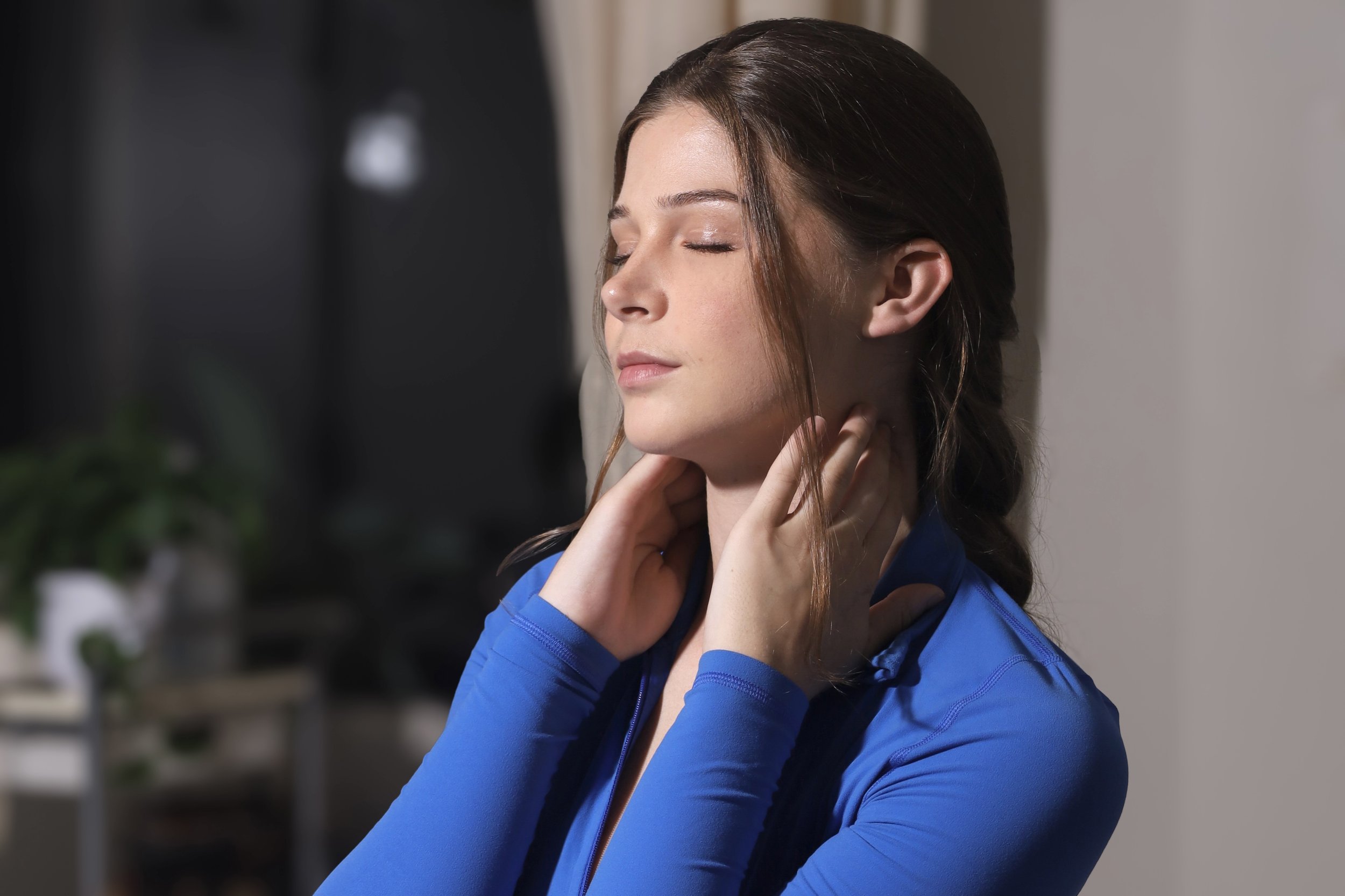
Curve Control
Overcoming Scoliosis with Schroth 3D Therapy
Your Spine, Your Story: Rewriting the Narrative of Scoliosis
In the dynamic flow of city life, where long days blend into active evenings, scoliosis can quietly reshape not just your posture but your daily rhythm—making simple movements feel labored or limiting your confidence in social or professional settings. But understanding and addressing scoliosis early can be empowering, turning a potential setback into an opportunity for strength and resilience. The Schroth 3-Dimensional Therapy offers a proven, non-surgical approach to manage curves, improve alignment, and enhance overall function—providing tools to reclaim control and thrive without invasive interventions.
Decoding Scoliosis: Types, Causes, and Early Signs
Scoliosis isn't a one-size-fits-all diagnosis; it varies in form and severity. Idiopathic scoliosis, the most common type, has no known cause and typically appears during puberty, affecting girls more frequently than boys with ratios up to 8.4:1 in curves greater than 20 degrees, as noted in a study in Child's Nervous System. Congenital scoliosis stems from spinal abnormalities at birth, while neuromuscular types link to conditions like cerebral palsy, and degenerative forms arise in adults from arthritis or disc wear. Causes range from genetic factors to muscle imbalances or poor posture habits exacerbated by desk work or dynamic activities.
Early signs include uneven shoulders, a prominent shoulder blade, an asymmetrical waist, or leaning to one side—often spotted during school screenings or self-checks like the Adam's forward bend test. Mild curves (under 20 degrees) may need monitoring, but progression can lead to back pain, breathing restrictions, or self-image concerns during formative years. A review in Scoliosis and Spinal Disorders highlights that untreated moderate curves can worsen, increasing risks for chronic issues. Recognizing these cues early ensures effective management, preserving mobility and confidence in an active lifestyle.
The Impact of Scoliosis on Daily Life and Long-Term Health
Beyond the curve, scoliosis can subtly influence posture, causing muscle fatigue, uneven load distribution, and pain in the back, neck, or hips—making prolonged sitting or standing uncomfortable for those with desk-bound jobs or dynamic commitments. Respiratory function may suffer in severe cases, as twisted ribs limit lung expansion, leading to shortness of breath during exercise or stress. Psychologically, visible asymmetries can affect body image, but proactive strategies build resilience.
Long-term, untreated scoliosis raises risks for degenerative changes like osteoarthritis or chronic pain syndromes, potentially requiring surgery in 10-20% of cases. However, early non-invasive therapies mitigate these, as evidenced by a longitudinal study in the European Spine Journal showing conservative management halts progression in high percentages of mild adolescent cases. For young adults, this means sustaining energy for career growth and personal pursuits without interruption.
Introducing Schroth 3-Dimensional Therapy: A Game-Changer for Scoliosis
The Schroth Method, developed in the 1920s by Katharina Schroth, revolutionizes scoliosis care by treating the spine in three dimensions—coronal (side-to-side), sagittal (front-to-back), and axial (rotational). It uses specialized breathing, postural corrections, and exercises to elongate the spine, derotate curves, and strengthen asymmetrical muscles, fostering symmetry and function. Unlike bracing alone, it empowers self-management through body awareness.
Key components include rotational angular breathing to expand compressed rib areas, position-specific postures for daily integration, and neuromuscular training to ingrain balanced habits. A meta-analysis in Spine Deformity confirms Schroth is effective for reducing the Cobb angle and improving quality of life in the short-term. This makes it ideal for mild to moderate curves, offering a proactive alternative to watchful waiting.
Who Benefits Most from Schroth Therapy?
Adolescents with idiopathic scoliosis (curves 10-45 degrees) see the greatest gains, as therapy complements growth to halt progression. Adults with degenerative or residual curves benefit from pain relief and improved mobility, while those with neuromuscular types gain better breathing and balance. Post-surgical patients use it for rehab, and proactive individuals prevent worsening. Women, who comprise 80% of idiopathic cases, often find it particularly helpful for managing symptoms influenced by hormonal shifts, as per a review in Pediatrics. It's versatile for various severities, with best results when started early.
Step-by-Step: How Schroth Therapy Works in Practice
Therapy begins with a detailed assessment using tools like scoliometers or X-rays to map your curve. Sessions guide you through:
Breathing Mastery: Inhale to expand concave sides, exhaling with resistance for de-rotation (10-15 reps).
Postural Corrections: Mirror-guided poses like "muscle cylinder" for elongation.
Exercises in Positions: Supine pelvic tilts or side-lying leg lifts to target asymmetries (3 sets of 10).
Daily Integration: Apply corrections during sitting, walking, or sleeping.
Progress Monitoring: Weekly adjustments based on improvements.
Home practice reinforces gains, with apps or mirrors aiding consistency. A randomized trial in Scoliosis showed Schroth exercises added to standard care improved pain scores and back muscle endurance after 3 months. Expect 20-30 sessions for noticeable changes, with lifelong tools for maintenance.
Evidence and Success Stories: Why Schroth Stands Out
Decades of research validate Schroth: A Cochrane review reports moderate evidence for curve reduction in adolescents, outperforming general exercises. Long-term studies show sustained improvements in trunk rotation and quality of life, with reduced progression. Real-world wins include teens ditching braces earlier, adults alleviating pain for active lives, and all gaining confidence from self-empowerment. For cost-conscious care, it's economical, averting surgical expenses of $100,000+.
Practical Tips: Daily Habits to Support Your Spine
Complement therapy with these:
Posture Checks: Set reminders for "tall spine" alignment; use apps like Posture Reminder.
Ergonomic Hacks: Adjust desks for elbow-height keyboards; wear supportive shoes.
Strength Builders: Planks (30 seconds x 3) for core; yoga poses like cat-cow for flexibility.
Breath Breaks: 5-minute deep breathing sessions to expand ribs.
Sleep Smarts: Side-sleep with pillows between knees; avoid stomach positions.
Nutrition Notes: Boost bone health with calcium-rich foods and vitamin D.
Track progress in a journal, noting pain levels and curve checks.
When to Seek Help: Your Action Plan
If asymmetry, pain, or breathing issues persist, consult a specialist—early detection via screening or self-exam (bend forward, check for rib hump) is key. Combine with bracing if needed for best results. Resources like the Scoliosis Research Society offer guides.
Embrace Schroth to rewrite your scoliosis story—gain tools for balance, strength, and unshakeable poise in life's twists.
At Cha Physical Therapy, our Schroth 3-Dimensional Scoliosis Therapy program provides this specialized, evidence-based care in our Midtown Manhattan clinic. With personalized assessments and one-on-one sessions, we tailor plans to your curve type, focusing on breathing, postural corrections, and neuromuscular training for optimal results.
Through consistent guidance and home integration, we help adolescents and adults halt progression, reduce pain, and improve function, all with flexible scheduling and insurance support.
We’re dedicated to getting you back to your best.
With personalized physical therapy programs and compassionate, expert care, we raise the bar for what rehabilitation can achieve.
Check your insurance
Curious if insurance will cover your sessions? We can tell you in just a few seconds.
Medicare
Anthem Blue Cross Blue Shield
Blue Cross of California
Fidelis Care New York
United Healthcare AARP
United Healthcare Oxford
United Healthcare Choice Plus
United Healthcare Community Plan
Cigna
Aetna
Our Insurance
We are happy to accept most insurance plans, including:
Unfortunately, there are some insurance plans we don’t accept. If we don’t take yours, we’ll contact you ahead of your visit.

























Getting Here
Our Midtown Clinic is at 16 West 32nd Street, Suite 1007, 3-5 minutes from Herald Square and a few blocks from Penn Station.
CLINIC HOURS
| Monday | 9AM - 7PM |
| Tuesday | 9AM - 7PM |
| Wednesday | 9AM - 7PM |
| Thursday | 9AM - 7PM |
| Friday | 9AM - 7PM |
| Saturday | 9AM - 3:30PM |
| Sunday | Closed |
